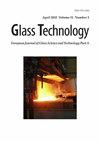Artificial Intelligence in Business Simulation Analysis
IF 0.3
4区 材料科学
Q4 MATERIALS SCIENCE, CERAMICS
Glass Technology-European Journal of Glass Science and Technology Part a
Pub Date : 2020-12-31
DOI:10.47672/ejt.629
引用次数: 0
Abstract
Purpose: Research on business simulation and machine learning has attracted immense interest in the last few years. The aim of this study was to provide a comprehensive view of machine learning in business simulation. To review the use of artificial intelligence in business simulation analysis. A review of the literature, however, shows little systematic reviews on the application of machine learning techniques to business simulation, yet systematic reviews have gained prominence in the academic jargon. Methodology: Thus, this study does reviews systematically a total of 123 shortlisted articles that focus on the machine learning techniques in the business simulation process. Findings: There are immense algorithms of machine learning which can be used in a business simulation, although this study was able to review ten machine learning algorithms in the business simulation process. As a whole, the machine learning algorithms have been deployed to yield lead-time production in the industry. In inventory and storage, machine learning has been applied to improve efficiency in identifying inventory patterns that would have never been revealed and thus saves on costs. Future direction also discussed.商业模拟分析中的人工智能
目的:商业模拟和机器学习的研究在过去几年中引起了极大的兴趣。本研究的目的是为商业模拟中的机器学习提供一个全面的观点。回顾人工智能在商业模拟分析中的应用。然而,对文献的回顾显示,关于机器学习技术在商业模拟中的应用的系统综述很少,然而,系统综述在学术术语中已经获得了突出地位。方法:因此,本研究系统地回顾了123篇入围文章,这些文章专注于商业模拟过程中的机器学习技术。发现:有大量的机器学习算法可以用于商业模拟,尽管本研究能够回顾商业模拟过程中的十种机器学习算法。总体而言,机器学习算法已被部署到行业中以产生提前期生产。在库存和存储方面,机器学习已被应用于提高识别库存模式的效率,从而节省成本。并讨论了未来的发展方向。
本文章由计算机程序翻译,如有差异,请以英文原文为准。
求助全文
约1分钟内获得全文
求助全文
来源期刊
CiteScore
0.30
自引率
0.00%
发文量
0
审稿时长
>12 weeks
期刊介绍:
The Journal of the Society of Glass Technology was published between 1917 and 1959. There were four or six issues per year depending on economic circumstances of the Society and the country. Each issue contains Proceedings, Transactions, Abstracts, News and Reviews, and Advertisements, all thesesections were numbered separately. The bound volumes collected these pages into separate sections, dropping the adverts. There is a list of Council members and Officers of the Society and earlier volumes also had lists of personal and company members.
JSGT was divided into Part A Glass Technology and Part B Physics and Chemistry of Glasses in 1960.

 求助内容:
求助内容: 应助结果提醒方式:
应助结果提醒方式:


